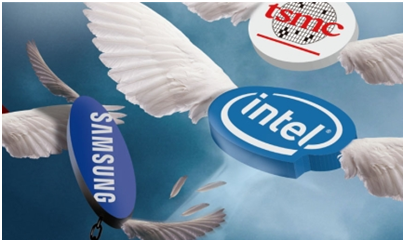Top Players of Semiconductor Industry Set to Ramp up Facility Investment

Top players of the global semiconductor industry are set to invest aggressively in production facilities this year, despite concerns that demand for semiconductors might fall due to the COVID-19 outbreak.
Intel, the overwhelming No. 1 player in the server and PC CPU industries, has suggested US$17 billion in estimated equipment investment in 2020. Intel has been steadily increasing its facility investment in recent years. It invested US$15.2 billion in 2018 and US$16 billion in 2019. Intel accounts for more than 80 percent of the PC CPU market and over 90 percent of the server CPU market.
TSMC stated in a recent earnings conference that it will invest US$15 billion to US$16 billion in facilities this year. TSMC invested US$10.5 billion in 2018, but the figure increased to US$14.8 billion in 2019 as the company swept away the extreme ultraviolet (EUV) exposure equipment exclusively supplied by ASML of the Netherlands. TSMC is planning to widen the gap with Samsung Electronics, the second largest foundry, by securing EUV equipment aggressively.
TSMC’s foundry market share in the first quarter of 2020 reached 54.1 percent, showing a significant gap with Samsung Electronics (15.9 percent), market researcher TrendForce said. In particular, TSMC’s market share rose 1.4 percentage points from the previous quarter, while that of Samsung Electronics fell by 1.9 percentage points. TSMC is capable of producing US$3,338 worth of semiconductors per wafer, higher than Samsung Electronics’ US$2,490, according to Information Network, a market research company.
Samsung Electronics, the No. 1 company in the DRAM and NAND flash markets, did not suggest its expected investment in 2020. But it is expected to increase investment compared to 2019. Samsung Electronics invested 6 trillion won in semiconductor facilities in the fourth quarter of 2020, up 66 percent on year. The company needs to make additional investment in production lines of its foundry and system semiconductor plants. Samsung Electronics introduced EUV equipment to its DRAM production process to create a “super-gap” with competitors. Samsung Electronics is expected to focus its investment on improving profitability rather than increasing production volume.
Even though the novel coronavirus crisis continues to reduce the size of investment by each company, high expectations for a market recovery after the end of the COVID-19 crisis is feeding the first rankers’ expansion of investment. IC Insights said that the memory semiconductor market will surge to US$171.0 billion in 2022, after standing at US$110.4 billion in 2020. The recent business performances of Intel and Qualcomm are a positive sign for Samsung Electronics in that a boom in the system semiconductor market leads to a boom in the memory semiconductor market. Intel posted operating profit of US$7 billion in the first quarter of 2020, up 69 percent from a year before, while Qualcomm posted an operating profit of US$ 991 million, up 5.4 percent.
“Latecomers are facing increasing difficulties in trailing the top players due to the latter’s overwhelming technological power and cost competitiveness based on the economy of scale,” said an official of the semiconductor industry. “In the post-COVID-19 era, the top players will further dominate their markets.”